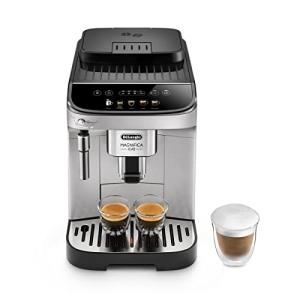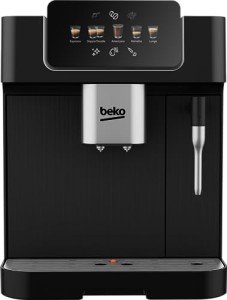
Professional Espresso Machine
FollowOverview
-
Founded Date July 7, 1932
-
Sectors Accounting / Finance
-
Posted Jobs 0
-
Viewed 4
Company Description
The 10 Most Terrifying Things About Bean-To-Cup Espresso Machine
The Ultimate Guide to Bean-To-Cup Espresso Machines
In an age where coffee culture has reached new heights, the demand for exceptional home-brewed Vintage Espresso Machine is at an all-time high. Among the wide variety of coffee-making devices available, bean-to-cup espresso machines are ending up being increasingly popular. These machines assure the delightful experience of newly ground coffee beans changed into a rich Espresso Machine For Office, all from the convenience of home. In this extensive guide, we will dig into the intricacies of bean-to-cup espresso machines, exploring their advantages, key features, and using a purchasing guide to help you make an educated choice.
What is a Bean-To-Cup Espresso Machine?
A bean-to-cup espresso machine automates the whole coffee-making process. It grinds the coffee beans, brews the espresso, and typically froths the milk, all at the touch of a button. This smooth experience allows coffee enthusiasts to enjoy café-quality drinks from the comfort of their homes.
Why Choose a Bean-To-Cup Espresso Machine?
| Pros | Cons |
|---|---|
| Newly ground coffee | Typically more expensive |
| Automated procedure | Can take up counter area |
| Customizable settings | Requires regular cleansing |
| Vast array of coffee types | Limited to machine capabilities |
| Often consists of milk frothing |
Advantages of Bean-To-Cup Espresso Machines
- Freshness: The grinding procedure takes place right before developing, which suggests that the coffee maintains its freshness and aromatic qualities.
- Benefit: With just the push of a button, coffee fans can enjoy their favorite espresso without the need for a separate grinder or steam wand.
- Customization: Many designs permit users to adjust different specifications, such as the grind size, water temperature level, and milk frothing consistency.
- Space-Saving: By combining several gadgets, bean-to-cup machines minimize mess on the counter top.
Secret Features to Look For
When looking for a bean-to-cup espresso machine, it’s necessary to think about a couple of vital functions:
| Feature | Value |
|---|---|
| Grind Settings | Determines the consistency of the ground coffee. A broader variety permits for more customization. |
| Developing Pressure | A higher pressure generally results in a better extraction and richer espresso. Perfect pressure is around 9 bars. |
| Milk Frother | Necessary for cappuccinos and lattes. Select in between manual and automatic frothing alternatives. |
| Easy Cleaning Mechanism | Search for machines with detachable components and automatic cleansing cycles for benefit. |
| Water Tank Capacity | Bigger tanks decrease the frequency of refilling, perfect for frequent use. |
| User Interface | A digital screen or app connection can boost user experience. |
Popular Bean-To-Cup Espresso Machines
Here are some popular models on the market today, highlighting their special features:
| Model | Grinder Type | Milk Frother | Pressure | Price Range |
|---|---|---|---|---|
| De’Longhi Dinamica | Cone-shaped | Automatic | 15 bars | ₤ 800 – ₤ 1,000 |
| Jura E8 | Ceramic | Automatic | 15 bars | ₤ 2,000 – ₤ 2,500 |
| Breville Oracle | Dual Boiler | Manual | 9 bars | ₤ 1,500 – ₤ 2,000 |
| Saeco Xelsis | Flat Burr | Automatic | 15 bars | ₤ 1,800 – ₤ 2,200 |
| Philips 3200 Series | Round | Manual | 15 bars | ₤ 600 – ₤ 800 |
How to Brew the Perfect Espresso
Utilizing a bean-to-cup espresso machine might seem straightforward, but accomplishing the best Mini Espresso Machine requires attention to detail. Follow these actions for a tasty cup:
- Select Quality Beans: Start with fresh, high-quality coffee beans to guarantee the best flavor.
- Change Grind Size: Depending on the kind of coffee bean and your taste preference, explore the grind size for optimum extraction.
- Water Temperature: Water consistently around 195 ° F to 205 ° F is ideal for espresso developing.
- Tamp the Coffee: If your machine allows, tamp the coffee equally to guarantee uniform extraction.
- Display Brew Time: Aim for an extraction time of 25 to 30 seconds for the best balance of flavors and crema.
Regularly Asked Questions (FAQs)
1. What is the distinction between a bean-to-cup machine and a standard espresso machine?
A bean-to-cup machine automates the grinding and brewing processes, while traditional espresso machines frequently require manual intervention for grinding and tamping.
2. Are bean-to-cup machines simple to clean?
A lot of modern machines are developed with ease of cleansing in mind, featuring detachable parts and automatic cleaning cycles. However, routine upkeep is crucial for optimum performance.
3. Can I utilize pre-ground coffee in a bean-to-cup machine?
A lot of bean-to-cup machines are developed particularly for entire beans. However, some models might have a bypass doser for utilizing pre-ground coffee.
4. What type of maintenance do bean-to-cup machines require?
Regular maintenance includes cleaning up the coffee premises container, water tank, and milk frother, along with descaling the machine every couple of months, depending on the water firmness in your location.
5. The length of time do bean-to-cup espresso machines last?
With correct care and maintenance, top quality bean-to-cup machines can last anywhere from 5 to 15 years.
A bean-to-cup Espresso Machine Online machine is an investment that can raise your home coffee experience. Combining benefit and quality, these machines enable coffee enthusiasts to craft scrumptious espressos without the need for multiple devices. By comprehending the crucial features and following best practices, individuals can select the right model tailored to their requirements and preferences. Whether you’re a seasoned barista or a casual sipper, checking out the world of bean-to-cup espresso machines is sure to brew up a delightful experience.




